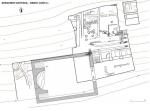Summary (English)
HERACLEA SINTICA (Lyudmil Vagalinski – lvagalin@techno-link.com) In the southern part of Sector 2, a civic basilica of the 3rd century AD was discovered in the northern part of the Roman forum. It measured 22.20 m by 15.80 m and its walls were built in _ opus mixtum _, preserved up to 5 m in height. A layer with traces from fire of the second half of the 3rd century AD was explored. The civic basilica was situated over an early Hellenistic building. Early Hellenistic strata were documented. Four houses of the Hellenistic and the Roman periods were explored, situated each above other. The end of the III Occupation Period in Heraclea Sintica occurred after AD 307. The severe destruction at the end of the IV Occupation Period occurred after AD 388 due to an earthquake. Several Greek graffiti on pottery and terracotta lamps indicated that the main language in the town was the ancient Greek. The finds included 153 bronze, copper, lead and silver coins, terracotta loom weights, terracotta figurines, terracotta lamps, lead slingshots, pottery, terracotta moulds for producing terracotta lamps and figurines, iron tools, marble architectural decoration, two Late Roman bronze figurines of Hermes and Heracles. The archaeozoological results from the Early Hellenistic strata are identical to those of the Roman period: pigs prevailed among the domestic animals, while goats were more numerous than sheep; bones from deer were used for the production of different objects; oxen, sheep and goats were mostly used for providing milk and wool and not so much for consumption; horses and dogs were not consumed. The paleobotanical data indicated that during the Early Hellenistic and the Late Roman periods the citizens of the town used pine, fir and oak.
- Lyudmil Vagalinski - Archaeological Institute with Museum
Director
Team
Research Body
- Archaeological Institute with Museum






![Download [PDF]](/excavation/skins/fasti/images/results/download_sml.png)
